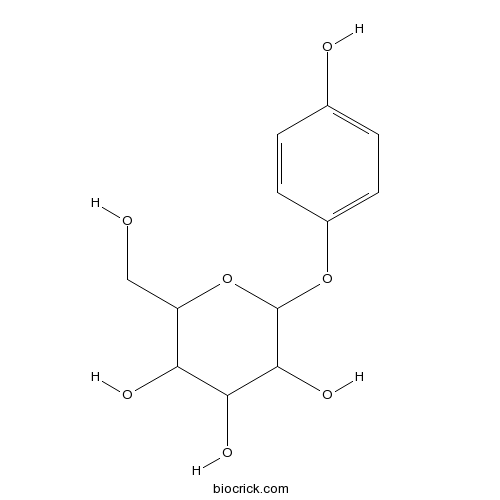Breynia fruticosa
Breynia fruticosa
1. The products in our compound library are selected from thousands of unique natural products; 2. It has the characteristics of diverse structure, diverse sources and wide coverage of activities; 3. Provide information on the activity of products from major journals, patents and research reports around the world, providing theoretical direction and research basis for further research and screening; 4. Free combination according to the type, source, target and disease of natural product; 5. The compound powder is placed in a covered tube and then discharged into a 10 x 10 cryostat; 6. Transport in ice pack or dry ice pack. Please store it at -20 °C as soon as possible after receiving the product, and use it as soon as possible after opening.
Natural products/compounds from Breynia fruticosa
- Cat.No. Product Name CAS Number COA
-
BCN6307
Arbutin497-76-7
Instructions

New derivatives of nonactic and homononactic acids from Bacillus pumilus derived from Breynia fruticosa.[Pubmed: 25044594]
Six new nonactic and homononactic acid derivatives, ethyl homononactate (1), ethyl nonactate (2), homononactyl homononactate (6), ethyl homononactyl nonactate (7), ethyl homononactyl homononactate (8), and ethyl nonactyl nonactate (9), as well as four known compounds, homononactic acid (3), nonactic acid (4), homononactyl nonactate (5), and bishomononactic acid (10), were isolated from culture broth of Bacillus pumilus derived from Breynia fruticosa. The structures of new compounds were elucidated by spectroscopic analysis and chemical methods. The optical purities of 1-6 were determined by HPLC/MS after treatment with L-phenylalanine methyl ester. The dimeric compounds 5-9 showed weak cytotoxic activities against five human cancer cell lines (IC50 19-100 μg/ml).
Diffuse coevolution between two Epicephala species (Gracillariidae) and two Breynia species (Phyllanthaceae).[Pubmed: 22848559]
The diffuse coevolution between two moth species (Epicephala lativalvaris and E. mirivalvata) and two plant species (Breynia fruticosa and B. rostrata) is reported based on field observations and indoor experiments conducted in Hainan and Fujian, China. Study results showed that the two Epicephala species jointly pollinated the two Breynia species, which led to a unique obligate pollination mutualism of two-to-two species specificity. A single Epicephala larva exclusively fed on seeds of host plants and developed to maturity by consuming all six seeds of each fruit, whereas a fraction of intact fruits were left to ensure the reproduction of plants within the whole population. Larvae of the two Epicephala species are competitive for resources; the population of E. mirivalvata is much smaller than that of E. lativalvaris, which has resulted from the differences in the female ovipositor structures and oviposition mode. The life history of Epicephala species highly coincides with the phenology of Breynia plants, and different phenology of B. fruticosa resulted in the different life history of the two Epicephala species in Hainan and Fujian. The natural hybridization of two host plants, possibly induced by the alternate pollination of two Epicephala species, is briefly discussed.
Triterpene and sterol derivatives from the roots of Breynia fruticosa.[Pubmed: 21428418]
A new nor-ceanothane-type triterpenoid, breynceanothanolic acid (1), and seven novel 4α-methyl sterols, fruticosides A-G (2-8), were obtained from the roots of Breynia fruticosa. The new compound structures were established by means of extensive spectroscopic and chemical methods. Compounds 7 and 8 are sulfur-containing derivatives of the 4α-methyl sterols, and the sugar moiety of compounds 4, 5, 7, and 8 (L-quinovose) is uncommon in plants. Compounds 1 and 2 exhibited moderate cytotoxicity against five human cancer cell lines.
Glycosides from Breynia fruticosa and Breynia rostrata.[Pubmed: 19883925]
Glycosides, 3-acetyl-(-)-epicatechin 7-O-beta-glucopyranoside (1), 3-acetyl-(-)-epicatechin 7-O-(6-isobutanoyloxyl)-beta-glucopyranoside (2), 3-acetyl-(-)-epicatechin 7-O-[6-(2-methyl-butanoyloxyl)]-beta-glucopyranoside (3), (5Z)-6-[5-(2-hydroxypropan-2-yl)-2-methyl-tetrahydrofuran-2-yl]-3-methylhexa-1,5-dien-3-O-beta-glucopyranoside (4), hydroquinone O-[6-(3-hydroxyisobutanoyl)]-beta-galactopyranoside (5), 4-(4-O-beta-glucopyranosyl-phenoxy)-1-O-beta-glucopyranosyl-1,3-benzenediol (6), 7,8-erythro-dihydroxy-3,4,5-trimethoxy-phenyl-propane8-O-beta-glucopyranoside (7), 6,7-dimethylbenzofuranol 5-O-beta-xylopyranosyl-(1-->6)-beta-glucopyranoside (8), along with 30 known glycosides, were isolated from Breynia fruticosa and Breynia rostrata (Euphorbiaceae). Their structures were determined on the basis of spectroscopic analysis and chemical methods.
Sulfur-containing spiroketal glycosides from Breynia fruticosa.[Pubmed: 17469870]
Phytochemical investigation of the chemical constituents of the aerial parts of Breynia fruticosa afforded 10 sulfur-containing spiroketal glycosides, including eight new compounds (1-8) and two known compounds, epibreynin B (9) and breynin B (10). Epibreynin B (9) was previously reported as a semisynthetic oxidation product of breynin A and is now reported from a natural source for the first time. The structures of 1-10 were determined on the basis of spectroscopic and chemical methods.
[Studies on the chemical constituents from the aerial parts of Breynia fruticosa].[Pubmed: 15656136]
To investigate the chemical constituents from the aerial parts of Breynia fruticosa.


